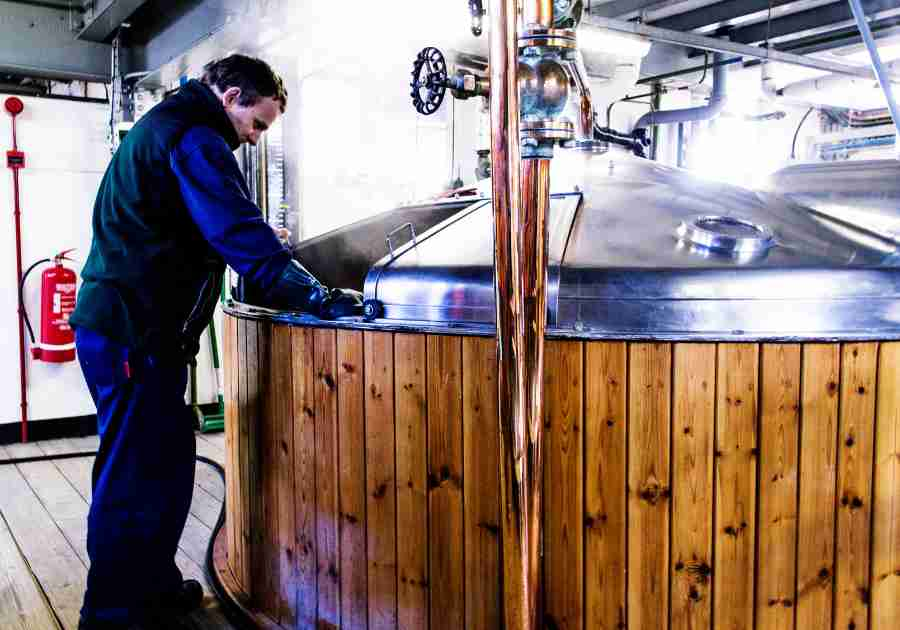At some point in everyone’s brewing career they start to question if any of this is legal? Maybe it’s right from the beginning, or maybe it’s after making so much that you now have a garage filled with bottles of mead and you’re worried about the ATF raiding your stash. I’ve taken a look at all the arcane laws surrounding homebrewing so you can stay compliant.
The amount of mead that you can legally make is 200 gallons per year. Anything over 200 gallons and you will have to apply for a brewery license in order to continue making mead. There are some variance on that 200 number depending on where exactly you live. Some areas are only 100 gallons and in some rare areas, you aren’t allowed any because it’s a dry town. However, typically the amount that you can make is 200 gallons per year.
There is a variance on how much you can make depending on where exactly you live and what state laws apply to you. Below, we’ll cover the difference in state laws and how it can impact how much mead you can make as a homebrewer.
State By State Differences In Alcohol Laws
The United States of America is a large collection of states that each have their own laws regarding alcohol. Following the abolition of prohibition, each state came up with their own slightly different laws on how to handle alcohol. These laws can vary wildly on everything from what time you can buy alcohol to what package the alcohol can come in.
I’m from Pennsylvania and the laws here regarding the creation and selling of alcohol are very strange so I’m very aware of the fact that the purpose of these laws can sometimes be puzzling. For example, up until a few years ago, you could only buy full cases of beer at beer distributors. I worked at a beer distributor and often people would come in from New Jersey and ask, “Do you sell six packs?” I’d have to tell them that they could only buy a case to which they would give me a strange look.
Another strange law in Pennsylvania is that breweries cannot sell beer directly to the retailer. Each brewery has a contract to have a wholesale company warehouse and deliver beer to retailers across the state. This led to the creation of wholesale companies that virtually no one knows about that are making huge sums of money every day powered by a virtual monopoly on selling beer brands in their territory.
Different States Have Different Total Amounts of Alcohol You Can Make
Even though prohibition was abolished in 1933, the act of brewing beer yourself wasn’t allowed by law federally until 1978. However, even though the federal bill passed, many state laws still prohibited homebrewing. It wasn’t until 2013 that every state in the union allowed homebrewing. Each state had to go through their own process of passing legislation to allow homebrewing.
Each state had different cultures, different attitudes towards alcohol, and different political climates. This led to each state being more liberal or conservative in a number of ways regarding the alcohol laws they were passing. One way this difference showed up was in the total amount of homebrew you could make.
Some states begrudgingly allowed people to make a modest amount of homebrew while other states said, yeah go wild.
Examples Of Different States Laws
Where I am in Pennsylvania, we’re dealing with a ton of crazy liquor laws. There’s an 18 percent tax on alcohol sales that was enacted in 1936 to help rebuild the town of Johnstown. By 1942 the city was rebuilt, and yet, the tax still exists to this day! Talk about an incentive to homebrew!
The amount of homebrew you can make in Pennsylvania is 200 gallons per year. This is convenient because normally I don’t come anywhere close to making this amount. Your typical homebrewing primary fermenter will be 5 gallons. Assuming you’re going the traditional route, that will allow you 40 batches.
Let’s take another state and see how it compares. In California you can only produce 100 gallons of homebrew if you are living alone. If there’s multiple people in the house you can produce 200 gallons. You also have to be 21 in order to make any homebrew. Not exactly sure what the logic is there, but you can see that just by being in a different geographic area may limit the amount of homebrew you can make.
Average Amount Of Homebrew vs Top End Of Homebrew Allowed
The question is, does this number matter all that much? The average homebrewer likely is just a hobbyist that won’t come anywhere close to that max number. Your average homebrewer likely has 1 setup and 1 beer or mead going at a time which occupies his fermenters for at least a month.
Let’s assume for a second that you do one batch a month, that would leave you with 12 batches on the year which would fall short of the 20 batches allowed with the 200 gallons max number. This would also put you under the 100 gallon number for a place like California. Unless you are a really hardcore homebrewer, you should be fine anywhere in the united states.
So what if you go over your state’s number? I’m not telling you to break the law or anything, but how would anyone know if all your homebrew was for personal consumption? It’s not like the alcohol control bureau is tracking the amount of malt sales at the homebrew store. The ATF likely won’t be breaching your house ready to kill your dog because you went over the arbitrary 200 gallon number.
That being said, if you’re the top 1 percent of homebrewers who have multiple fermenters going at once with multi tap kegerators in your man cave, maybe start thinking about keeping it close to that 200 gallon number.
Homebrewing vs Brewing License
If you’re thinking to yourself that maybe you’d like to start making a serious lifestyle out of your homebrewing hobby, you might want to look into getting set up with a brewing license. That’s the only way you’ll ever be able to make mass quantities of alcohol and be able to sell it.
If you look at some of the best beer brands, many of them started as homebrewing operations out of the owner’s house. One example is Sam Calagione who turned his homebrew hobby into one of the most successful craft beer brands on the market today-Dogfish Head.
Getting your brewing license is a very complicated time intensive process. You need to be sure you really want to do it before starting, but if 200 gallons isn’t cutting it for you anymore, this is the next logical step.
Fermentables vs Distilling
While it’s legal to homebrew alcohol by the traditional method of fermenting your sugars and bottling or kegging your final product, at some point you might ask, what about making spirits?
This is illegal to do without a license at the federal level. Generally, you can own distilling equipment, but it’s illegal to make liquor with it. Some states actually allow distilling your own liquor like Alaska and Arizona. Federal law doesn’t supersede state law, but I’m not a lawyer so I wouldn’t chance it.
Selling Homebrew
It’s illegal to sell any of your homebrew. If you’re getting into this to eventually start a business, realize that you’ll have to eventually get a brewing license before you start selling your brew. I know what you’re thinking though: “What if I barter with my homebrew?” Well, that’s illegal as well it seems. Homebrewing laws state that it’s only legal for personal consumption. If you wanted to trade other homebrewers for their own brews, it would be in a gray area of legality. Your best bet is to just make it for yourself and “share” it with friends.
Conclusion
We’ve come a long way since homebrewing was illegal. We can make anything in terms of beer, mead, wine, and cider and keep it for our personal collection. The only question now is, what will you make?



